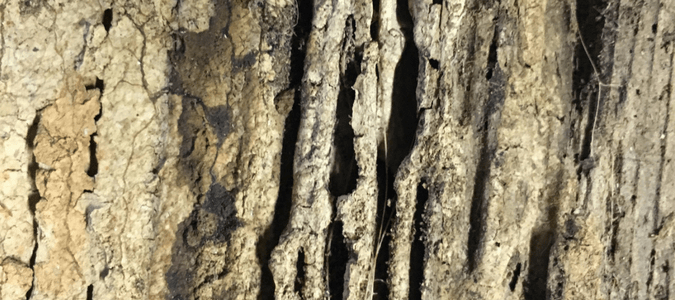Signs You Have Termites
Termites cause billions of dollars of damage each year, and the average termite infestation can cost homeowners tens and even hundreds of thousands of dollars in repairs. We’ll share the common signs of Eastern subterranean-type termites found in and around Orlando and help you with termite prevention.
Common Termites in Orlando
Subterranean termites nest in the soil to obtain moisture and can nest in wet wood. Essentially, they can quickly attack any timber in contact with the ground.
The subterranean termite colony members regularly seek food to feed themselves and their nestmates. They will travel hundreds of feet to find cellulose material to return to their nest. Subterranean termites are highly attracted to cellulose, the plant fiber used in wall and roof cavities to insulate, draught proof, and reduce noise in homes. During their travels, they may stumble upon the wood of your house and begin feasting. Termites in the wood of homes usually come from colonies already established in the soil.
Termites enter two ways: through the expansion joints in concrete slabs or where utilities enter the house. If the home’s wood does not contact the soil, termites can build mud tunnels or tubes to reach wood several feet above the ground.
Termites are typically hidden inside the walls of a structure, and looking at the barriers to confirm they’re gone is not practical. There are a few things you can look for, however.
Look For Mud Tunnels
Mud tubes or tunnels, which are approximately the size of the width of a pencil, can form along a home’s interior or exterior walls. Termites build these mud tunnels to travel from their nest to their food source without being disturbed. Their favorite meal is the wood in and around your home.
Termites’ favorite meal is the wood in and around your home, so any damaged wood around your house may indicate termites have taken up residence on your property.
Preventing a Termite Infestation
While it may be difficult to detect termites inside your walls, you can do some simple things to help prevent a termite infestation.
Avoid Moisture and Humidity Accumulation
Subterranean termites require a moist environment. Termites (and ants) are attracted to moisture, so check for any moisture accumulation near your foundation. Ensure you divert water away from your home with properly functioning downspouts, gutters, and splash blocks. The ground near the foundation must be sloped or graded for surface water to drain away from the building.
Reduce the humidity in any crawl space with proper ventilation. Your home’s crawl spaces should have ventilation openings in the foundation at the rate of two square feet per 25 linear feet of foundation wall, and one vent should be within five feet of each exterior corner of the building. This helps keep the ground dry and inhospitable to termites.
Prevent Potential Pathways
Prevent shrubs, vines, and other plants from growing over and covering the vents. Generally, trellises and vines should not be growing on your home since they are “hidden paths” of termite entry into the home structure, which could bypass any termiticide soil barrier that may already be in place.
Check that No Woodwork Touches the Soil
There should be no contact between the building’s woodwork and the soil or fill. The best case is that any exterior woodwork is located or relocated to at least six inches above the ground.
Clean Up Your Projects
Avoid burying wood scraps or waste lumber before and during construction or home improvement projects, especially near the building. Remove old form boards, grade stakes, tree stumps and roots around and beneath the building.
Do not stack or store firewood lumber or other wood products against the home’s foundation or within the crawl space.
Watch for Winged Termites
Winged termites emerging from the ground outdoors but near the house do not necessarily mean that the house is infested, but it is an excellent reason to check further all the other areas described above. Winged termites called “swarmers” may be out to start new colonies.
Different varieties of termites will swarm at other times, even in fall and winter. Most termite species will invade in spring and summer. Native subterranean termites often swarm in the spring on humid afternoons. The Formosan subterranean termite, an introduced species in recent decades, starts invading in the spring and may continue to pack into the summer. Their flights consist of tens of thousands of swarmers and tend to occur in the evening.
Trust ABC For Your Termite Control
Termite problems are not a do-it-yourself project, so if you suspect you might have termites, you should contact a pest management specialist who can assess the problems you discover and treat your home. At ABC Home and Commercial Services, we’re here to help. Contact us at the first sign of termites.
